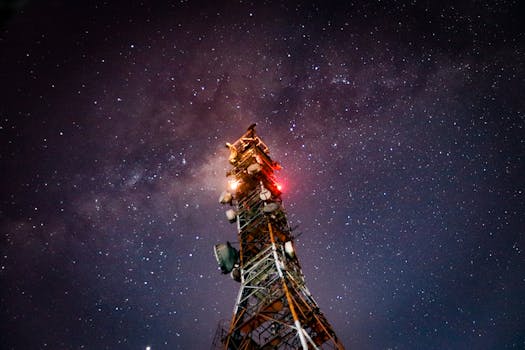
Starlink: Revolutionizing Global Internet Connectivity with Satellite Technology
Starlink is a satellite constellation developed by SpaceX, a private aerospace manufacturer and space transport services company founded by Elon Musk. The project aims to provide high-speed, low-latency internet connectivity worldwide, bridging the digital divide and transforming the way we communicate. With its innovative approach to satellite technology, Starlink is poised to revolutionize the global internet landscape.
The concept of Starlink was first announced in 2015, with the goal of creating a constellation of low-Earth orbit (LEO) satellites that would provide internet connectivity to remote and underserved communities around the world. Since then, SpaceX has made significant progress in developing the technology and launching the satellites into orbit. As of 2022, Starlink has launched over 2,000 satellites, with plans to deploy a total of 42,000 satellites in the coming years.
How Starlink Works
Starlink uses a constellation of small, low-cost satellites in LEO, which is approximately 500-600 kilometers above the Earth’s surface. Each satellite is equipped with a high-gain antenna and a transceiver, allowing it to communicate with user terminals on the ground. The satellites are designed to be highly efficient, with a lifespan of around 5-7 years, after which they will be deorbited and replaced with new satellites.
The user terminals, also known as gateways, are located on the ground and are connected to the internet via fiber-optic cables. When a user sends data through the Starlink network, the signal is transmitted to the nearest satellite, which then relays the signal to the destination satellite, and finally to the user terminal at the destination. This process occurs in a matter of milliseconds, allowing for high-speed and low-latency connectivity.
Benefits of Starlink
Starlink offers several benefits over traditional internet connectivity methods, including fiber-optic cables and cellular networks. One of the primary advantages is its ability to provide internet access to remote and underserved communities, where traditional infrastructure is often lacking. This can have a significant impact on economic development, education, and healthcare in these areas.
Another benefit of Starlink is its ability to provide high-speed and low-latency connectivity, making it ideal for applications such as online gaming, video streaming, and virtual reality. The network is also designed to be highly resilient, with multiple satellites and gateways providing redundancy and failover capabilities.
Challenges and Controversies
Despite the potential benefits of Starlink, the project has faced several challenges and controversies. One of the primary concerns is the risk of satellite collisions and space debris, which could have a significant impact on the environment and other satellite operators. There are also concerns about the potential for Starlink to interfere with other satellite systems and radio astronomy operations.
In addition, there are concerns about the cost and accessibility of Starlink, particularly in developing countries. The initial cost of the user terminal is around $500, which may be prohibitively expensive for many individuals and communities. There are also concerns about the potential for Starlink to exacerbate existing social and economic inequalities, particularly if it is not made available to all communities on an equal basis.
Conclusion
In conclusion, Starlink is a revolutionary satellite constellation that has the potential to transform the global internet landscape. With its innovative approach to satellite technology, Starlink is poised to provide high-speed, low-latency internet connectivity to remote and underserved communities around the world. However, the project also faces several challenges and controversies, including concerns about space debris, interference, cost, and accessibility.
As Starlink continues to develop and expand, it will be important to address these challenges and ensure that the benefits of the technology are available to all. This will require careful planning, collaboration, and regulation, as well as a commitment to making the technology accessible and affordable for all communities.





